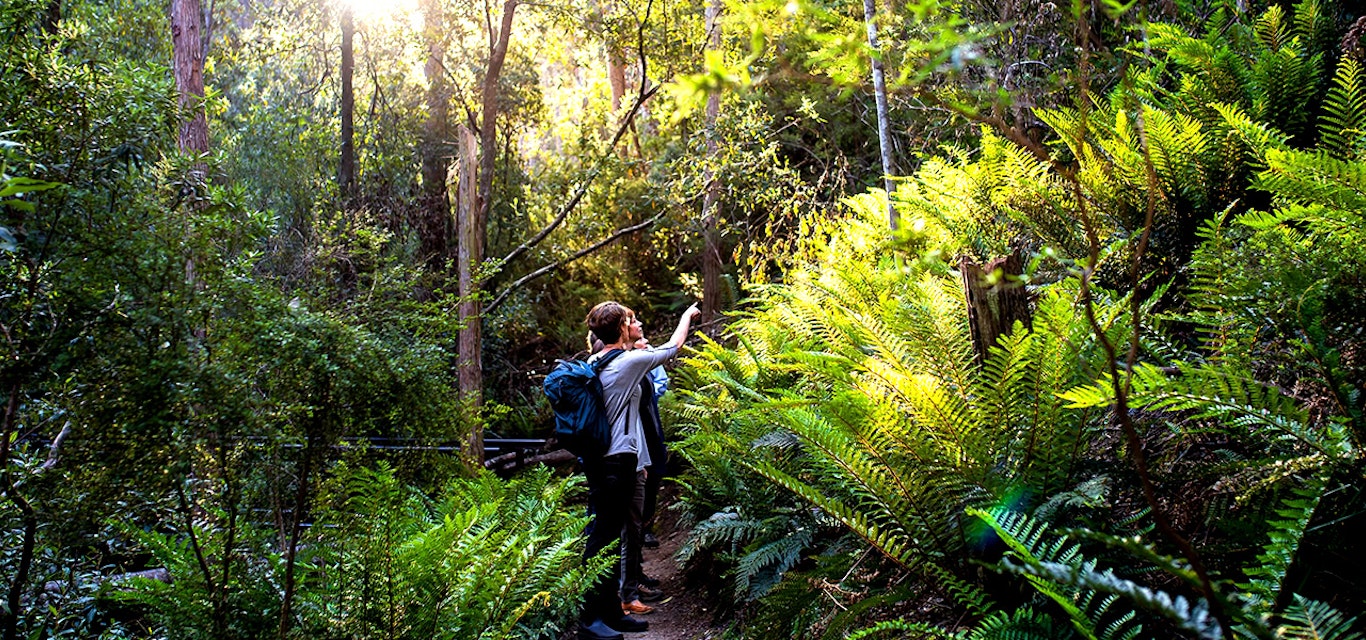Nature as nurture
Andrew Bain takes a walk on the wild side and finds new connection to his surroundings with a bout of forest bathing.
In a clearing at the edge of a forest folded into the foothills of kunanyi/Mount Wellington, my eyes are closed but my senses are open. A gentle wind breathes across me, and behind the raucous calls of the cockatoos and currawongs, the subtle sounds of the forest – the beat of bird wings, the so! avalanche of bark strips falling from trees – are suddenly amplified.
“We know about our six senses, but they say we actually have 14 to 20,” says Kara Spence, as I open my eyes. Kara, the owner and operator of Nature. Be in It, is one of only two certified nature and forest therapy guides in Tasmania, and today she’s my guide to forest bathing.
Known as shinrin-yoku in Japan, where it’s been part of the health system for 30 years, forest bathing is nature as nurture, finding calm through the forest.
There’s plenty of science and literature on nature’s positive effects on the brain – cortisol (stress hormone) levels have been shown to drop by 16 per cent with a walk in an urban park alone – and much of the benefit of forest bathing is said to come from the breathing in of phytoncides, or essential oils, from the trees.
Kara runs a range of forest-bathing trips in Hobart, from pure immersion experiences to walks with lunch or dinner and dusk wildlife viewing.
“It’s a different way of being in nature, using all our senses,” Kara says. “We tend to think of nature as something separate to us, but I believe nature connection is a deep human need.”
Over the next two hours, as we stroll through the forest, I’m issued a series of invitations: to observe the motion around me, to magnify my view of a strand of moss, to find larger worlds inside the smaller worlds of things.
We walk slowly – unnaturally so – turning the normal into something more, encouraging me to experience and observe this place differently. Within a few minutes, my monkey mind has unravelled itself from the thoughts and cares with which it arrived. It’s like a fallen tree returning to nature.
At the walk’s end, my final invitation is to simply sit and be with a single tree. For 30 minutes I sit beside a native cherry, alone but not alone in a crowd of trees. “In some cultures, trees and rocks are seen to have wisdom,” Kara explains, and I remember once being instructed in Arctic Finland to simply stand with my hand against a tree, and feeling genuinely settled by the experience.
I close my mind to everything but my native cherry companion. I feel nothing conscious – no sense of the tree’s wisdom – but I do feel its peace.
And as I sit, a wallaby pops out from the undergrowth, stopping a few metres away to observe me. I’ve returned to nature and nature has returned to me.
- Nature. Be in It walks start from 2.5 hours, with tea and snacks; longer tours include a sit down lunch or dinner.
